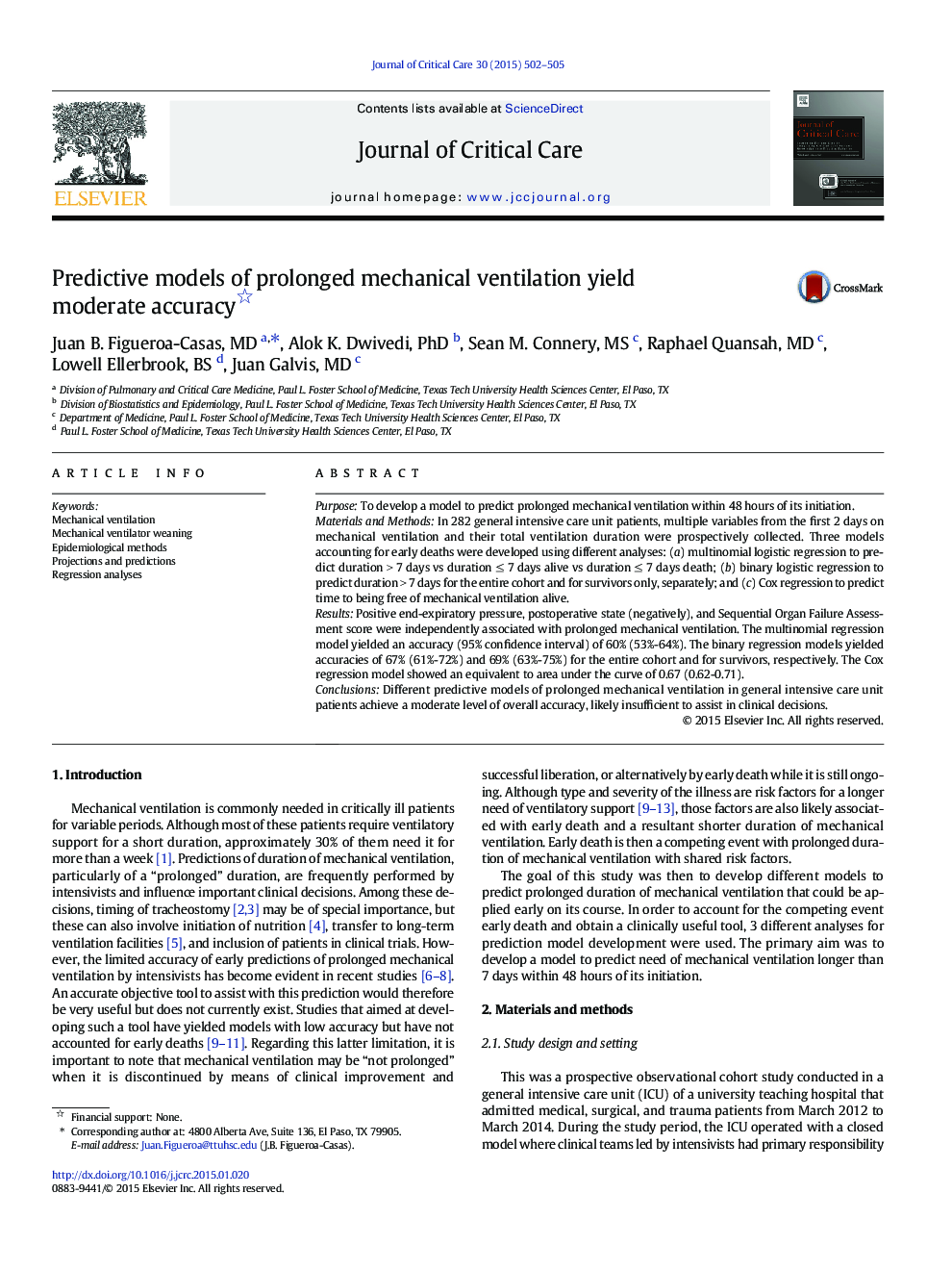| Article ID | Journal | Published Year | Pages | File Type |
|---|---|---|---|---|
| 5885586 | Journal of Critical Care | 2015 | 4 Pages |
PurposeTo develop a model to predict prolonged mechanical ventilation within 48 hours of its initiation.Materials and MethodsIn 282 general intensive care unit patients, multiple variables from the first 2 days on mechanical ventilation and their total ventilation duration were prospectively collected. Three models accounting for early deaths were developed using different analyses: (a) multinomial logistic regression to predict duration > 7 days vs duration ⤠7 days alive vs duration ⤠7 days death; (b) binary logistic regression to predict duration > 7 days for the entire cohort and for survivors only, separately; and (c) Cox regression to predict time to being free of mechanical ventilation alive.ResultsPositive end-expiratory pressure, postoperative state (negatively), and Sequential Organ Failure Assessment score were independently associated with prolonged mechanical ventilation. The multinomial regression model yielded an accuracy (95% confidence interval) of 60% (53%-64%). The binary regression models yielded accuracies of 67% (61%-72%) and 69% (63%-75%) for the entire cohort and for survivors, respectively. The Cox regression model showed an equivalent to area under the curve of 0.67 (0.62-0.71).ConclusionsDifferent predictive models of prolonged mechanical ventilation in general intensive care unit patients achieve a moderate level of overall accuracy, likely insufficient to assist in clinical decisions.
